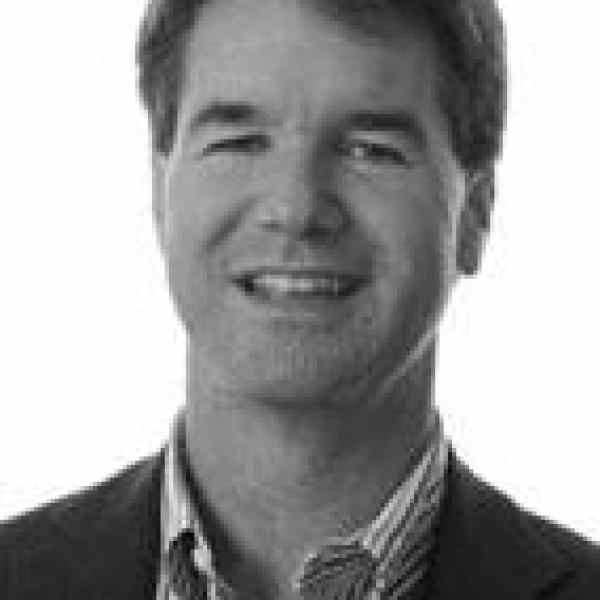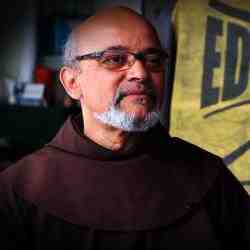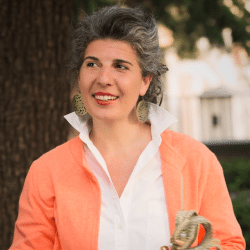Introduction
By reconfiguring the school day and increasing the independency and efficacy of elementary-level charter schools, John Danner is allowing schools to deliver quality education to low-income students, while scaling with greater ease and resources.
The New Idea
John wants to close, at scale, the so-called achievement gap: The performance gap between students from low-income and middle/high-income families. He saw that by adjusting the traditional school day and staffing structure, he could achieve an overall higher-performing and scalable school network, characterized by teacher specialization, optimized student learning, and increased parent involvement.
The approach he and his team are introducing cuts by 20 percent the certified teachers needed for quality learning, freeing up $500,000 per school of 450 students and making it cash-flow positive on government funds alone from day one. This works due to a re-envisioning of the elementary-level school day, including the addition of a “learning lab:” A 100-minute session facilitated by non-certified, hourly staff (e.g. City Year volunteers). Facilitators earn less than teachers, and the “savings” is routed to optimize student achievement by focusing on developing teachers and school administrators, and stress-testing the industry’s promising but nascent technology tools.
John and his team have begun their work in San Jose, with two schools fully operating and an ambitious expansion plan. While he is growing his school network, he also believes that independent replication of aspects of the model by other schools will open new possibilities for innovation and greater efficacy in the charter movement as a whole, particularly as it seeks to serve low-income students.
The Problem
The “achievement gap”—the gap in learning between students in low-incomes families and neighborhoods, and students in middle and high-income neighborhoods—is real and alarming, despite enormous investments of time, energy, and public and private funds. The charter school movement, now in its second decade (i.e. first state charter laws came out in 1991), has generated good ideas and models to address the gap, and the movement remains the most promising vehicle for testing and spreading ideas and practices that work. But charters are not matched to the large scale of the problem.
And actually, a small slice of the charter pie is aimed at low-income students – less than 10 percent of charter schools are really focused here. That means fewer than 100,000 low-income students out of the 1 million total students currently enrolled in charter elementary and secondary schools. For those networks that do serve low-income neighborhoods, they are stymied. Even KIPP, the largest charter network serving low-income students, has 84 schools—a huge achievement, but it doesn’t map to the scale and enormity of the challenge: Millions of children from low-income families, many also belonging to minority households and using English as a second language, get a subpar education that does not set them up to succeed in middle and high school, and adulthood beyond.
Limiting factors to growth run the gamut from having the right teachers and leadership, to getting real estate and leasing arrangements, to summoning the political will at a community or school board level. Charter school leaders spend their time battling the school board, worrying about the security of their classroom space and whether they can get their leases renewed, and managing a team of teachers who work 12-hour days, get paid very little, and—in elementary school—scramble to stay on top of the five or six subjects per school day. The best talent burns itself out in a couple of years, creating a talent problem that proves crippling.
Typically, charters cover their costs from two sources: The per child allocation from public funding, and some infusion of philanthropic support (between $200,000 and $1M on, say, a $4M budget). The lack of fiscal independence contributes to significant problems: The charter schools can not lease or build their facility, and visionary leaders spend time raising money from increasingly weary donors and worrying that donor fatigue and shifting public will close them up at the school board level. There are also scarce funds to invest in teachers and their development, with its obvious link to student achievement and longer-term sustainability.
In addition to the question of scale, there’s the concern about quality. Teachers struggle to manage large classrooms while giving individual students what they need to develop optimally along their unique learning curve. This is especially pronounced in schools serving low-income students, as the spectrum of ability is large and often compounded by differing levels of English language proficiency. Technology-enabled learning tools offer teachers a way to deliver “mass individualized” learning. “Smart” software programs will recognize from a logon ID who a child is, what her instruction level is, how she learns, and so on. These technologies hold the promise of aiding schools and teachers enormously by allowing individualized learning in ways that challenge everybody, both the high-performers and those in need of remedial help. But the development of these technologies isn’t moving quickly enough—in fact, it’s quite nascent. As the industry evolves in the next 5 to 10 years to the standards of the gaming world, educators need to jump in and test and assess what’s working and what’s not, helping what will be a valuable and low-cost tool to evolve more rapidly and wisely.
The Strategy
John reconfigures the elementary school day and instruction so that it works more effectively for overall learning, as evidenced by the high student achievement scores of the first two Rocketship schools. The mechanism that allows this to work is what John calls the hybrid model, which reduces by 20 percent the number of certified teachers required per K-5 school of 450 students by blending instruction from certified, higher-paid teachers and non-certified, lower-paid facilitators. The $500,000 per year that is “saved” is routed to a few important functions that ensure stability (i.e. real estate and leasing arrangements), optimize learning, and allow independence and growth of the network.
The Rocketship approach melds broader platform learning, which allows teachers to specialize, with opportunities for individualized learning. Per day, students get 100 minutes of math/science, 200 minutes of literacy/social studies, and 100 minutes of “learning lab,” which consists of independent reading, individualized technology-enabled learning, and various other enrichment programs, including music, and physical education (partnering with Ashoka Fellow Jill Vialet’s Playworks for PE). The math/science module is taught by a certified instructor at the whole class level; the second module is taught by a certified instructor with a focus on smaller group learning within the context of the whole class; and the third module is tailored to the individual student and is guided by a non-certified instructor. Each student has an individualized learning plan, with progress assessed every eight weeks to adjust the plan. The bottom 25 percent of learners/performers get two hours of mandatory, small-group after-school tutoring.
Teachers, for their part, experience Rocketship as being radically different from the traditional elementary school both in terms of what they do day to day, and how they perceive career possibilities longer-term. The approach requires them to go deep, and deliver high-quality learning for the students in their care. They work with one grade level, and specialize in literacy/social studies or math/science—essentially a secondary school staffing model applied to elementary school. In terms of career path, a few things are important. First, they have someone looking after their development: This is the “academic dean,” a role created with money freed up through the hybrid model. Teachers who join Rocketship are introduced to a career path from day one that includes moving into mentoring and administrator roles within the school, or taking on expansion and recruitment duties as the network expands. This allows promising, high-energy new teachers—more than half of Rocketship’s staff are Teach for America alumni—to see where they are going, and feel nurtured to get there. The specialized focus cuts back on class prep time and allows teachers to become good at what they teach, and feel on the ball and successful, rather than completely swamped and ineffective.
In the Rocketship model, school leadership is managed by a triumvirate: The principal (ultimately in charge), the academic dean, and the operations manager. Most school districts roll all responsibilities into a single job, but specialized roles allow for greater efficacy, John and his team believe. Principals, responsible for the culture of the school, are identified 18 months in advance of a new school’s opening, allowing time for training and teacher recruitment.
Moving out from students, teachers, and administrators, there’s another role that’s important to the short- and long-term success of the approach. The parents. John and his co-founder Preston Smith see parents as another key group to engage and mobilize—for the sake of currently enrolled students and for the expansion of the network, and its political independency. Teachers visit the homes of all students during the first semester, and hold monthly community meetings, with parent attendance of 70 percent. (John notes that there is some self-selection at play here—the parents who choose to enter their children into Rocketship following the lottery already agree with the Rocketship philosophy.) John sees enormous potential to harness parents and their will and enthusiasm to create political freedom for action—in other words, to favor locally elected leaders who support pro-charter policy.
Aside from arranging people in roles that work for them, Rocketship is positioning itself to contribute significantly to the development of improved technology tools that allow further individualization of learning. While the hybrid model isn’t dependent on the technology, it has technology “in its DNA,” as John says, and is attracting attention from the Gates Foundation and others to play a leading R&D role in stress- and performance-testing new tools, helping along technologies for elementary-level kids so that the tools get “smart” fast and with real-time feedback loops from the classroom. Harnessing technology for learning cuts costs, and segments learners in ways that push everybody at a pace that matches each child’s capabilities.
In its first three years, Rocketship has demonstrated remarkable success as measured by student achievement scores, moving 91 percent of its students from the bottom two quintiles to the top three in the last year. The two schools to date, each with 450 students, serve a student body of which 73 percent are English language learners and 78 percent qualify for free or reduced lunches. It is the highest performing elementary serving low-income students in Santa Clara County, and the third highest in the state of California. As compared to elementary schools in Santa Clara County, Rocketship ranks (in API scores) 5 of 45, behind four schools serving student bodies of which 10 percent qualify for free and reduced lunches.
With direction from a great Board, which includes Senior Ashoka Fellow Don Shalvey, John and his team will create 10 additional schools in San Jose, then move their model nationally. In the next 30 years, the teams aim to introduce Rocketship schools in low-income neighborhoods of the 50 largest U.S. cities, reaching 20 percent of low-income, elementary school students—approximately 1 million students.
The Person
John grew up in San Jose, California, the eldest of three children. His sister was born with severe brain damage and needed considerable care, and his brother was ten years younger. John says he felt like an only child. His mother started what became a robust organization to aid people with mental disabilities and their families. His father was a judge.
John got a computer when he was 12, when the first Apple II desktop came out. From about that age, he wanted to start a technology company. Following high school at a Jesuit-run, all-boys school in San Jose, John headed down the road to Stanford, and studied electrical engineering because it was a way to continue working with computers. He was a software engineer after college, and he loved it. Everything was changing and evolving rapidly in the technology world.
Five yeas into his life as a programmer, John still wanted to start a company. It was the mid 1990s and things were beginning to really bubble with the Internet. The possibilities for changing the world seemed endless. In 1994, he quit his job, and set about writing up ideas into business plans until one stuck. He, along with many others at the time, saw huge potential in commercializing the Internet, and after several iterations, he arrived at an idea: His company would write the code that places ads on Internet search engines and other sites. He walked into Yahoo’s office when the company was 6 people, securing it as a first client. Making mistakes and learning along the way, he brought the business from just himself to 250 staff, and $40M (and slightly profitable) in four years before selling it. Two lessons stand out and apply to his work today: First, people are everything, survival and success depends on the team being outstanding; and second, different skills are needed when you start and when you build. In the start up phase, you throw yourself against the wall over and over until it breaks—these aren’t the skills that allow you to build and sustain. John did learn to build, and he approaches Rocketship with that temperament, an ability to sustain short-term bumps and focus on the longer-term vision.
After John sold his company, the Jesuits called. They wanted money to build a middle school in a low-income neighborhood of San Jose. Instead of funding them, John offered to craft the plan, hire the teachers, and sort the budget. He became so inspired, seeing that a school could change an entire neighborhood, bringing it optimism about its future and its children. If you could do this at some scale, he thought, it would really matter.
Then John’s wife, a lawyer, got a faculty post at Vanderbilt, and the family moved to Nashville for four years. John began a deliberate apprenticeship. He taught second grade for two years, learning what it takes to be effective in the classroom. Then he helped to start a KIPP school in one of the most challenging of Nashville’s neighborhoods, an effort that exposed him to the importance of navigating politics and the constraints, many of them tied to financial dependence, that struggling charters face. He saw that despite its flaws, KIPP really got the middle school culture piece right—the teacher and principle recruitment and training. As with his company, he saw that if the people are right and see the right incentives and outcomes, you have the potential for a great school.
John is committed to seeing through Rocketship in the next 10 to 15 years. An idea that may emerge after is a global online education system, accessible to students throughout the world and tailored to their individual needs.
John lives in Silicon Valley with his wife and two children, ages five and seven.




